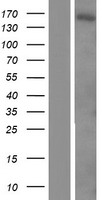order histories, retained contact details for faster checkout, review submissions, and special promotions.
Forgot password?
order histories, retained contact details for faster checkout, review submissions, and special promotions.
Locations
Orders Processing,
Shipping & Receiving,
Warehouse
2 Shaker Rd Suites
B001/B101
Shirley, MA 01464
Production Lab
Floor 6, Suite 620
20700 44th Avenue W
Lynnwood, WA 98036
Telephone Numbers
Tel: +1 (206) 374-1102
Fax: +1 (206) 577-4565
Contact Us
Additional Contact Details
order histories, retained contact details for faster checkout, review submissions, and special promotions.
Forgot password?
order histories, retained contact details for faster checkout, review submissions, and special promotions.
TRPM2
transient receptor potential cation channel, subfamily M, member 2
Nonselective, voltage-independent cation channel mediating sodium and calcium ion influx in response to oxidative stress. Extracellular calcium passes through the channel and acts from the intracellular side as a positive regulator in channel activation. Activated by ADP-ribose, nicotinamide adenine dinucleotide (NAD+), reactive nitrogen species and arachidonic acid. Inactivated by intracellular ATP. Confers susceptibility to cell death following oxidative stress. Isoform 2 does not seem to be regulated by ADPR. Has ADP-ribose pyrophosphatase activity.
| Gene Name: | transient receptor potential cation channel, subfamily M, member 2 |
| Family/Subfamily: | Ion Channel , Calcium channel - TRP |
| Synonyms: | TRPM2, EREG1, LTrpC-2, LTRPC2, NUDT9L1, KNP3, NUDT9H, Trrp7 |
| Target Sequences: | NM_003307 NP_003298.1 O94759 |
Publications (5)


If you do not find the reagent or information you require, please contact Customer.Support@LSBio.com to inquire about additional products in development.









